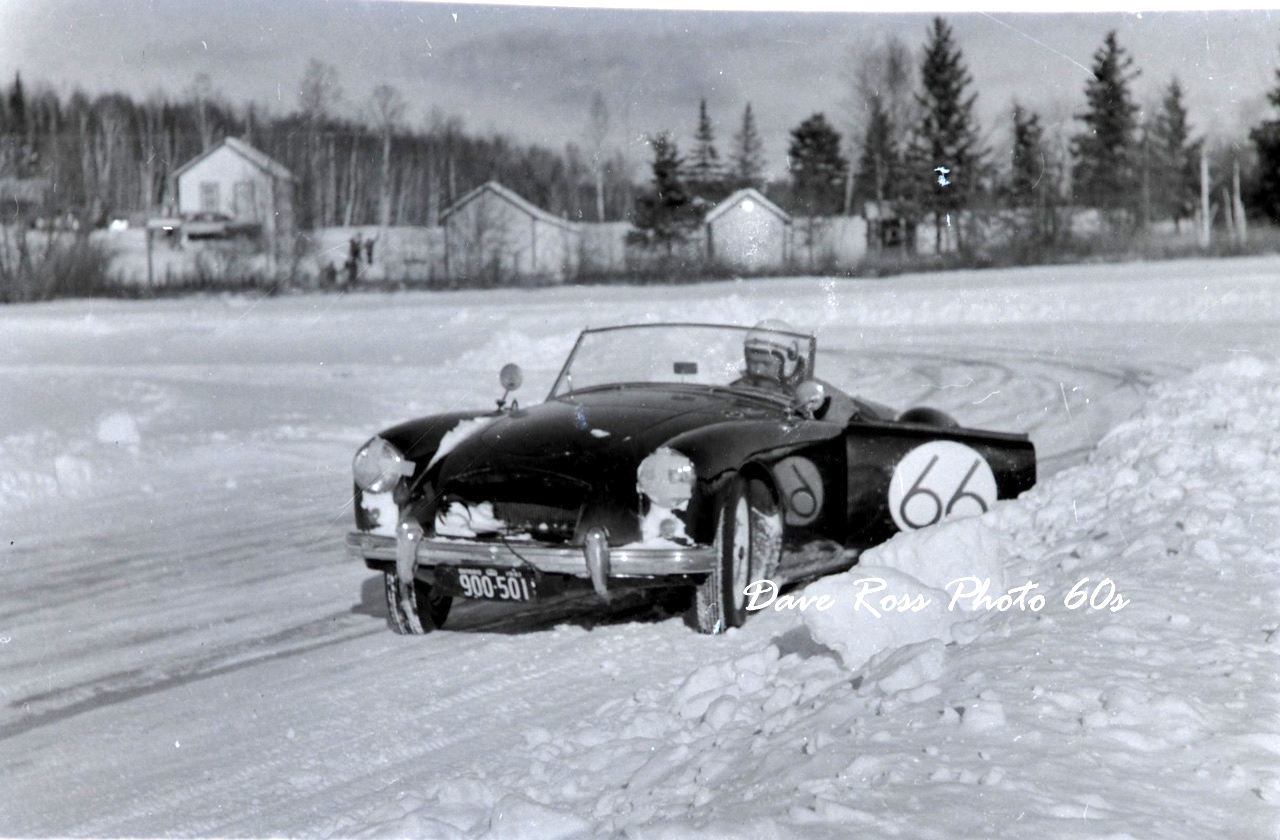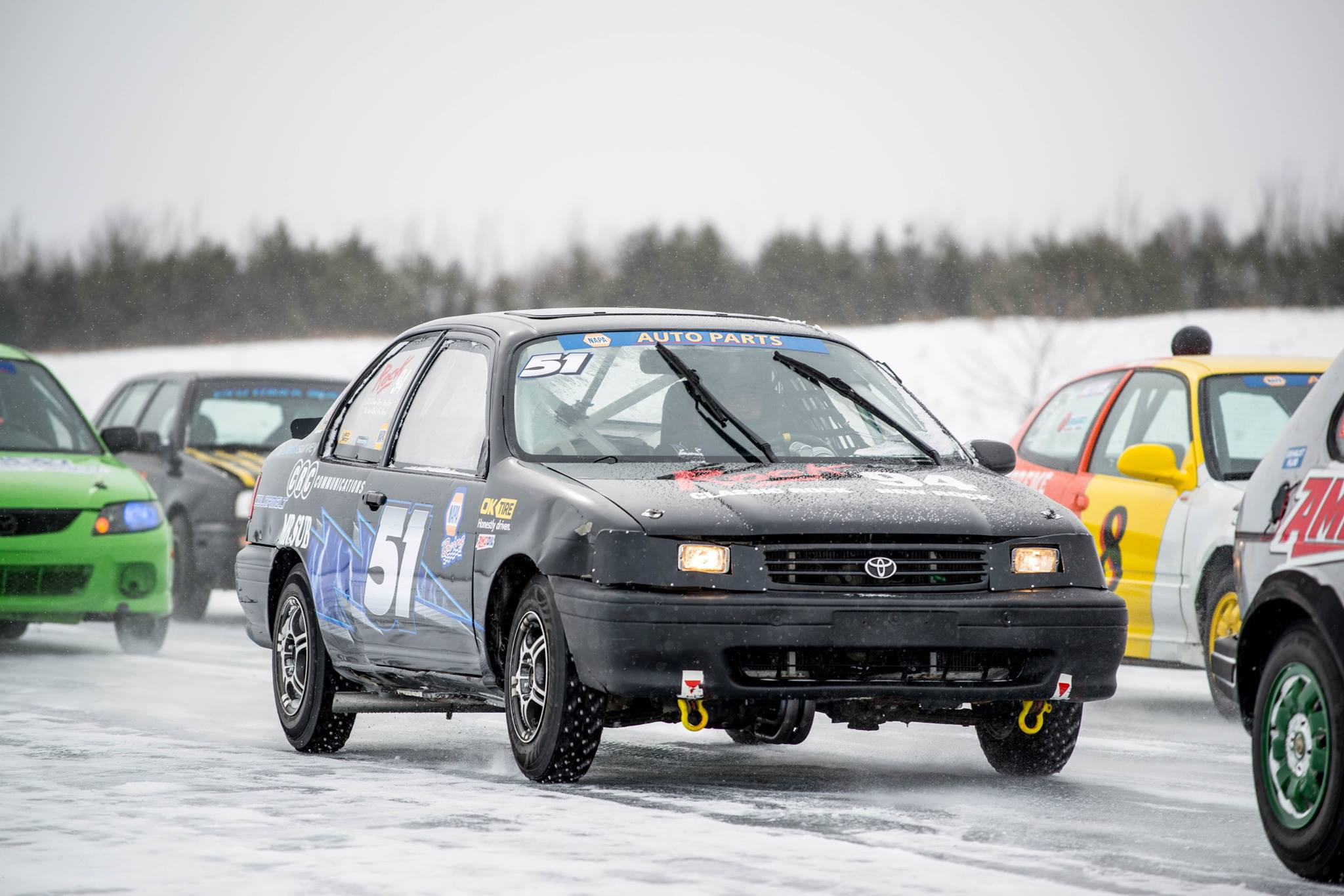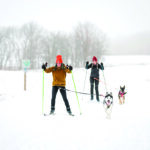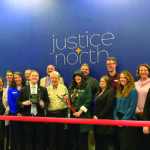Winter Adventures at Mission Bay
Every Sunday as winter tightens its grip on Thunder Bay, a unique and adrenaline-fueled ritual unfolds on icy Lake Superior at Mission Bay: It’s time for auto ice racing.
Started in 1959 by the Central Canada Car Club, ice racing has remained a steadfast competitive winter activity that many in Thunder Bay and surrounding regions eagerly await. During the early 1960s, the club underwent a name change, transforming into the Thunder Bay Autosport Club, and has since experienced continuous growth and expansion.
In addition to offering ice racing, which consists of two classes, studded and rubber-to-ice, the club provides autocross racing opportunities for its members who prefer to race in the warmer, less icy months.
“We average about 100 members for the season,” Gary Adomko, the Thunder Bay Autosport Club president, said. “It’s probably a 50-50 split that is on board with the ice racing program.”
Of the 50 or so members who enjoy navigating around icy corners at high speeds, Adomko said there is a diverse range of ages, skills, and individuals. “Our club is made up of people from the age of 16 to 60 plus,” he said. “We have people of all different walks of life that get involved with the club.”
Each ice racing participant or team is responsible for building an ice racing vehicle, ensuring it is equipped with the best modifications to handle gliding across the ice-covered track. In the past, teams have included doctors, mechanics, office professionals, and a group of co-workers from an engineering firm. Adomko said in addition, many of the participants are family members who race together as a team or enjoy a little family competition by racing against each other. Adomko and his son find themselves in the latter category. The two have raced against each other for the past 10 years. “It’s been a lot of fun,” he said. Adomko’s son, Cameron, serves as the club’s competition director.

The two ice racing classes, studded and rubber-to-ice, offer two different levels of competition and needed skill. Studded tires, equipped with metal protrusions, excel in providing enhanced grip on icy terrain, allowing drivers to gain traction and maintain faster speeds. On the other hand, the rubber-to-ice class requires the driver to practice the art of control. “It’s all about foot control,” Adomko said.
Once a driver has mastered the art in the rubber class, Adomko said, “You’re going to be a really good studded driver because you’re going to know how to make sure that you’re not overpowering the wheels and you’re getting that traction that you want.” While Adomko has participated in both classes, he prefers the studded class, “It’s way faster. I think it’s a lot more fun.”
Although the club allows flexibility in building and modifying the racing vehicle, each driver or team must adhere to the club’s rules and regulations. The rules state that all cars must be equipped with a roll cage and double door bars, and all cars competing in the rubber-to-ice shall not have a wheelbase of more than 103 inches. No pick-up trucks, SUVs, or vans are allowed to race. Safety is of the utmost importance for the Thunder Bay Autosport Club. In addition, drivers must wear a fire-retardant driver suit. While it’s not typically common for accidents or rollovers to occur, Adomko said it’s been known to happen in the past.
The club hosts an annual awards banquet during which numerous awards are presented to recognize the achievements of ice racing winners and participants. Awards include club points champion, rookie of the year, body beautiful, best engineered, and Don Kettering Sportsperson of the Year. Accompanying the distributed awards is a typically less desirable rollover trophy. “It’s not really a trophy you want to get,” Adomko said. “You can get some people that get their foot into the throttle a little too much, and they’ve clipped a snowbank, and the next thing you know, they’re going over.”
Despite the occasional rollover, the competitive winter activity has a successful and safe track record. “Our primary goal is always safety,” Adomko said.

Although the number of ice racing participants ebbs and flows yearly, the club sustains a significant percentage of ice racing diehards who consistently return season after season. One of the sustaining members is Adomko. He has been involved with the club for 25 years and calls himself the “oldest active member.” He first joined the club in 1979 and, after a few years, spent two terms as the president. He stepped away from the club for a few years but returned in 2003 and has been leading organizing events and initiatives with the club ever since.
One of the initiatives the Thunder Bay Autosport Club spearheads is an annual autocross race fundraiser to help children with cancer. The money raised during the event is given to the Northern Cancer Fund and the Northern Cardiac Fund through the Thunder Bay Regional Health Sciences Foundation. “We’ve raised around $85,000 over a six-year period,” Adomko said. In recent years, the club has also donated funds to the Furget-me-not Animal Shelter farther north along Lake Superior in Terrace Bay.
The 2024 ice racing season kicked off on Sunday, January 14, at noon and continues throughout the winter until March 10. The winter racing events are open to spectators, and Adomko welcomes the public to show up and spend a Sunday watching the studded and rubber-to-ice races. In the past, he said it’s common for young adults and families to spend a Sunday afternoon enjoying the snow and watching the cars race around the track. “It’s really cool to see people from other countries getting out and seeing what’s available in Canada vs. what they have at home.”
For more info on the Thunder Bay Autosport Club, visit: thunderbayautosportclub.com.




